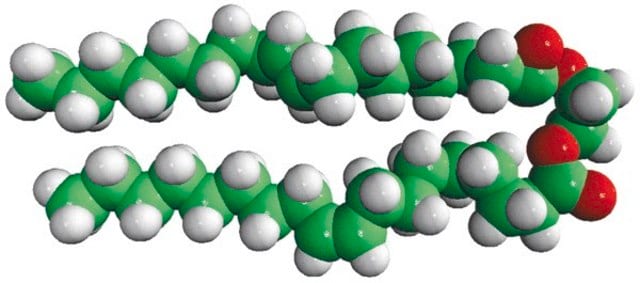1.09621
Ethylene glycol
for analysis EMSURE® Reag. Ph Eur,Reag. USP
Synonym(s):
Ethylene glycol, Glycol, 1,2-Ethanediol
About This Item
Recommended Products
Agency
reag. Ph. Eur.
reag. USP
Quality Level
vapor pressure
0.053 hPa ( 20 °C)
product line
EMSURE®
Assay
≥99.5% (GC)
form
liquid
autoignition temp.
410 °C
expl. lim.
3.2-15.3 % (v/v)
impurities
≤0.00002% Chloride (Cl)
≤0.0003% Substances reducing potassium permanganate (as O)
≤0.001% Acidity (as CH3COOH)
≤0.005% Formaldehyde
color
APHA: ≤10
refractive index
n20/D 1.431-1.433
pH
6-7.5 (20 °C, 100 g/L in H2O)
bp
197.6 °C/1013 hPa
mp
-14--10 °C
transition temp
flash point 111 °C
density
1.11 g/cm3 at 20 °C
cation traces
Fe: ≤0.00005%
storage temp.
2-30°C
InChI
1S/C2H6O2/c3-1-2-4/h3-4H,1-2H2
InChI key
LYCAIKOWRPUZTN-UHFFFAOYSA-N
Looking for similar products? Visit Product Comparison Guide
General description
Application
- in diode laser-based detection of single molecules in solutions.
- and reducing agent in the synthesis of gold nanoparticle.
Analysis Note
Identity (IR): conforms
Color: ≤ 10 Hazen
Acidity (as CH₃COOH): ≤ 0.001 %
Density (d 20 °C/20 °C): 1.113 - 1.115
Density (d 25 °C/25 °C): 1.10 - 1.12
Refractive index (n 20/D): 1.431 - 1.433
Melting point: -14 - -10 °C
Boiling point: 196.5 - 198.5 °C
Chloride (Cl): ≤ 0.00002 %
Fe (Iron): ≤ 0.00005 %
Formaldehyde: ≤ 0.005 %
Substances reducing potassium permanganate (as O): ≤ 0.0003 %
Readily carbonizable substances: conforms
Sulfated ash: ≤ 0.005 %
Water: ≤ 0.1 %
Legal Information
Signal Word
Warning
Hazard Statements
Precautionary Statements
Hazard Classifications
Acute Tox. 4 Oral - STOT RE 2 Oral
Target Organs
Kidney
Storage Class Code
10 - Combustible liquids
WGK
WGK 1
Flash Point(F)
239.0 °F - open cup
Flash Point(C)
115 °C - open cup
Certificates of Analysis (COA)
Search for Certificates of Analysis (COA) by entering the products Lot/Batch Number. Lot and Batch Numbers can be found on a product’s label following the words ‘Lot’ or ‘Batch’.
Already Own This Product?
Find documentation for the products that you have recently purchased in the Document Library.
Customers Also Viewed
Related Content
Our ergonomic 1 L HDPE bottle for acids, bases, and solvents provide an alternative to glass chemical bottles for lab safety in pouring & handling of hazardous chemicals in the laboratory.
Our ergonomic 1 L HDPE bottle for acids, bases, and solvents provide an alternative to glass chemical bottles for lab safety in pouring & handling of hazardous chemicals in the laboratory.
Our ergonomic 1 L HDPE bottle for acids, bases, and solvents provide an alternative to glass chemical bottles for lab safety in pouring & handling of hazardous chemicals in the laboratory.
Our ergonomic 1 L HDPE bottle for acids, bases, and solvents provide an alternative to glass chemical bottles for lab safety in pouring & handling of hazardous chemicals in the laboratory.
Our team of scientists has experience in all areas of research including Life Science, Material Science, Chemical Synthesis, Chromatography, Analytical and many others.
Contact Technical Service











